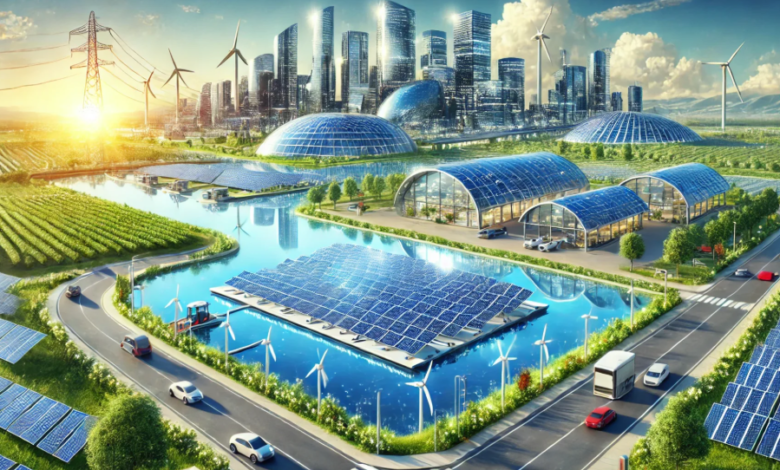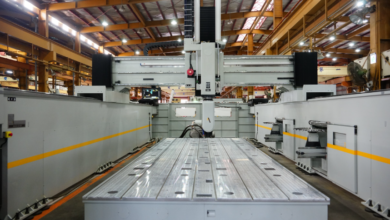How to Use Solar Containers for Rural Electrification

Electricity is the foundation of modern life. Yet, in many rural regions across Africa, Asia, and South America, millions of people still live without reliable power. Extending traditional grid infrastructure to remote areas is expensive and time-consuming, often impractical due to challenging terrain and low population density.
That’s where solar containers come in. These portable, plug-and-play power units are reshaping the way rural communities access energy. By integrating solar panels, batteries, and inverters inside a standard container, these systems offer scalable and sustainable solutions for off-grid electrification.
In this guide, we’ll explore how solar containers are transforming rural power access, the benefits they bring, and practical ways to implement them effectively.
What Is a Shipping Container Solar System?
A shipping container solar system is a prefabricated renewable power station built within a shipping container. The unit houses all the core components of a solar installation, panels, inverters, controllers, and energy storage, making it a complete, transportable energy solution.
Key Features
- Portability: Designed for quick transport and setup anywhere.
- Modularity: Units can operate independently or be connected to form microgrids.
- Durability: The steel structure protects components from harsh environmental conditions.
- Scalability: Power output can be increased by linking multiple containers.
Such systems are ideal for powering rural villages, schools, clinics, agricultural sites, and small businesses where grid access is unavailable or unreliable.
The Energy Access Challenge in Rural Areas
According to the International Energy Agency (IEA), over 600 million people in Sub-Saharan Africa alone lack access to electricity. Rural electrification projects face obstacles like:
- High costs of extending transmission lines.
- Low population density and limited infrastructure.
- Difficult logistics for fuel supply or grid maintenance.
Solar containers overcome these challenges by generating clean, localized energy, reducing the dependency on centralized grid expansion.
How Solar Containers Enable Rural Electrification
Fast Deployment
Traditional grid expansion can take years; solar containers can be delivered and operational within days. This makes them suitable for rapid electrification campaigns and pilot projects.
Off-Grid Independence
Communities powered by solar containers aren’t affected by national grid failures or fuel shortages. Energy is generated and stored locally, ensuring a stable supply even in remote environments.
Hybrid Power Options
Modern units can integrate additional sources like wind turbines, diesel backup, or small hydro systems to create hybrid microgrids, providing 24/7 energy reliability.
Scalable Microgrid Development
Solar containers can start small, powering essential services like lighting and water pumps, and expand as demand grows. Multiple containers can interconnect to form decentralized community microgrids.
Sustainable & Eco-Friendly
Unlike diesel generators, solar systems produce no emissions or noise, contributing to cleaner air and improved community health.
See also: AI Image Generator: Transforming Creativity with Technology
Applications in Rural Communities
The versatility of solar containers means they can serve a wide variety of purposes in rural regions, such as:
- Healthcare: Powering rural clinics, vaccine refrigerators, and medical equipment.
- Education: Providing electricity for schools, digital classrooms, and internet access.
- Agriculture: Supporting irrigation systems, cold storage for crops, and food processing equipment.
- Water Access: Operating pumps and purification systems for safe drinking water.
- Community Businesses: Enabling small shops, workshops, and local enterprises to grow.
In many cases, a single container can electrify an entire small village, transforming lives through improved education, healthcare, and economic opportunity.
Economic and Social Impact
Empowering Local Economies
Access to electricity boosts productivity, creates new business opportunities, and enhances agricultural value chains. Entrepreneurs can run welding machines, operate phone charging stations, or process local produce, all powered by clean energy.
Improving Quality of Life
Solar containers enable lighting after dark, refrigeration for food and medicine, and internet connectivity, enhancing safety, health, and communication.
Reducing Energy Poverty
By decentralizing power generation, solar containers bring energy independence to remote areas, helping close the gap between urban and rural development.
How to Implement Solar Containers for Rural Electrification
To maximize impact, a structured approach to deployment is essential:
Assess Energy Demand
Start by identifying community needs, household consumption, schools, clinics, or small businesses. This helps determine the required system size.
Site Selection
Choose a location with ample sunlight exposure, secure terrain, and easy access for maintenance.
Choose the Right Configuration
Different configurations are available depending on community size and load requirements. Some containers are designed for mobility, while others serve as permanent installations.
Community Engagement
Involve residents early. Training and education programs ensure long-term operation and community ownership.
Maintenance and Monitoring
Most systems include smart controllers that track performance remotely, enabling preventive maintenance and energy optimization.
Shipping Container with Solar Panels in Action
One effective deployment model uses a shipping container with solar panels as the core of a rural microgrid. When placed strategically in a village center, it can:
- Supply electricity to multiple households via distribution lines.
- Power communal facilities such as schools and medical centers.
- Store excess energy during the day for nighttime usage.
Because these systems are modular, additional containers can be added as the population and energy needs expand.
In regions like East Africa and Southeast Asia, NGOs and private developers are already leveraging these systems for mini-grid electrification projects, demonstrating both financial and social viability.
Financing Models for Rural Solar Containers
To make solar containers accessible, creative financing models are being adopted:
- Pay-as-you-go (PAYG): Households pay small daily or monthly fees using mobile money.
- Public-Private Partnerships (PPPs): Governments and private firms share investment and operational roles.
- Microfinancing: Community groups or cooperatives finance solar units collectively.
- Donor-funded projects: NGOs and international agencies provide grants for rural electrification initiatives.
These models ensure affordability while promoting sustainable, community-led energy management.
The Future of Rural Electrification
With advancements in solar technology and falling battery costs, containerized solar systems are expected to become even more efficient and affordable. Integration with smart grids, IoT sensors, and AI-driven monitoring will further enhance reliability and performance.
Future systems may also incorporate energy-as-a-service models, where users subscribe to power access rather than owning the system, making clean energy universally attainable.
Conclusion
Rural electrification is not just about providing light; it’s about enabling progress. Solar containers offer a practical, scalable, and environmentally friendly solution to one of the biggest development challenges of our time.
By deploying containerized solar systems, communities can leapfrog traditional infrastructure and gain immediate access to sustainable energy. Whether through a shipping container solar system or a shipping container with solar panels, these technologies are empowering remote regions to become self-sufficient, resilient, and future-ready.
In the coming years, as renewable technologies continue to advance, solar containers will play an even greater role in bridging the global energy divide, lighting the path toward a more equitable and sustainable world.




